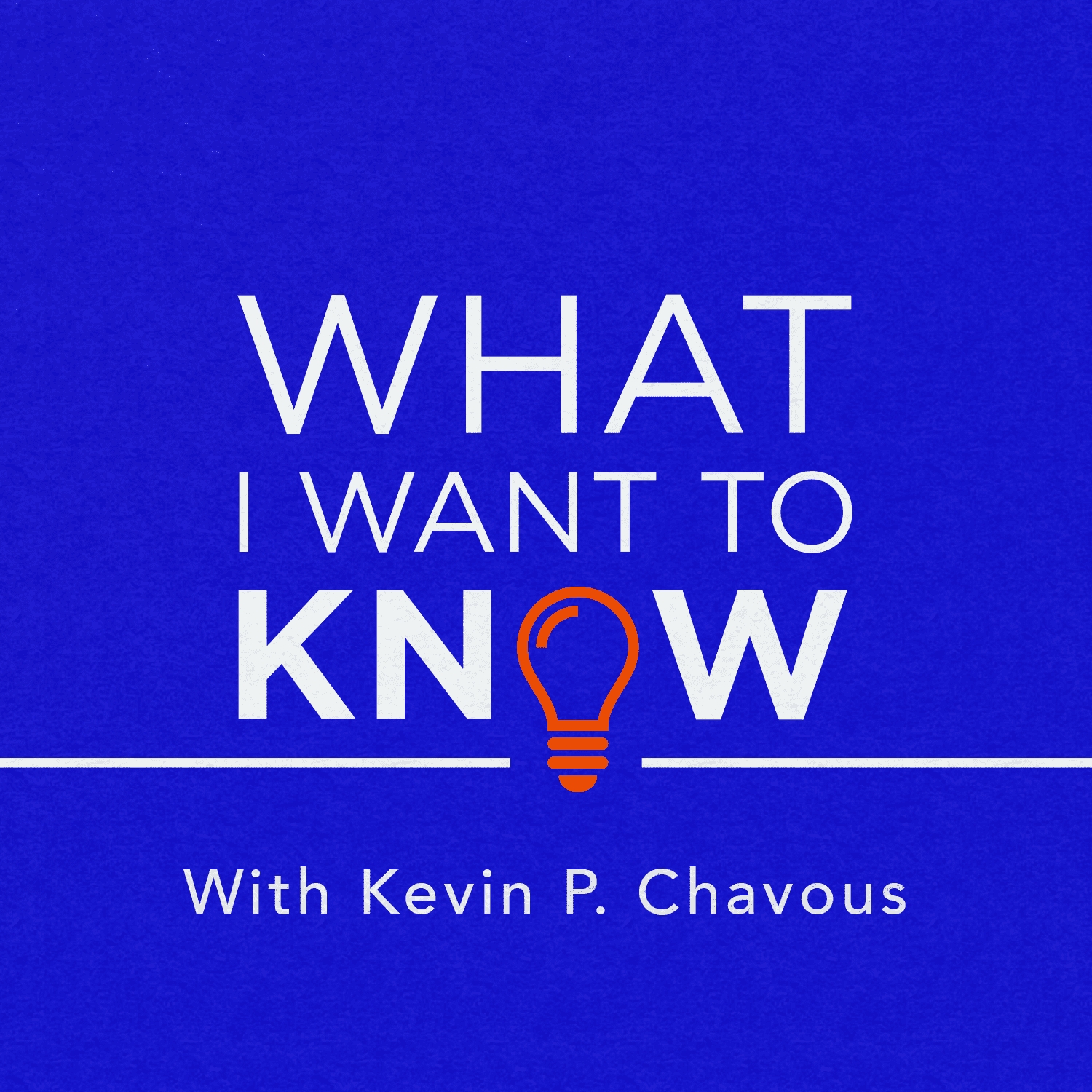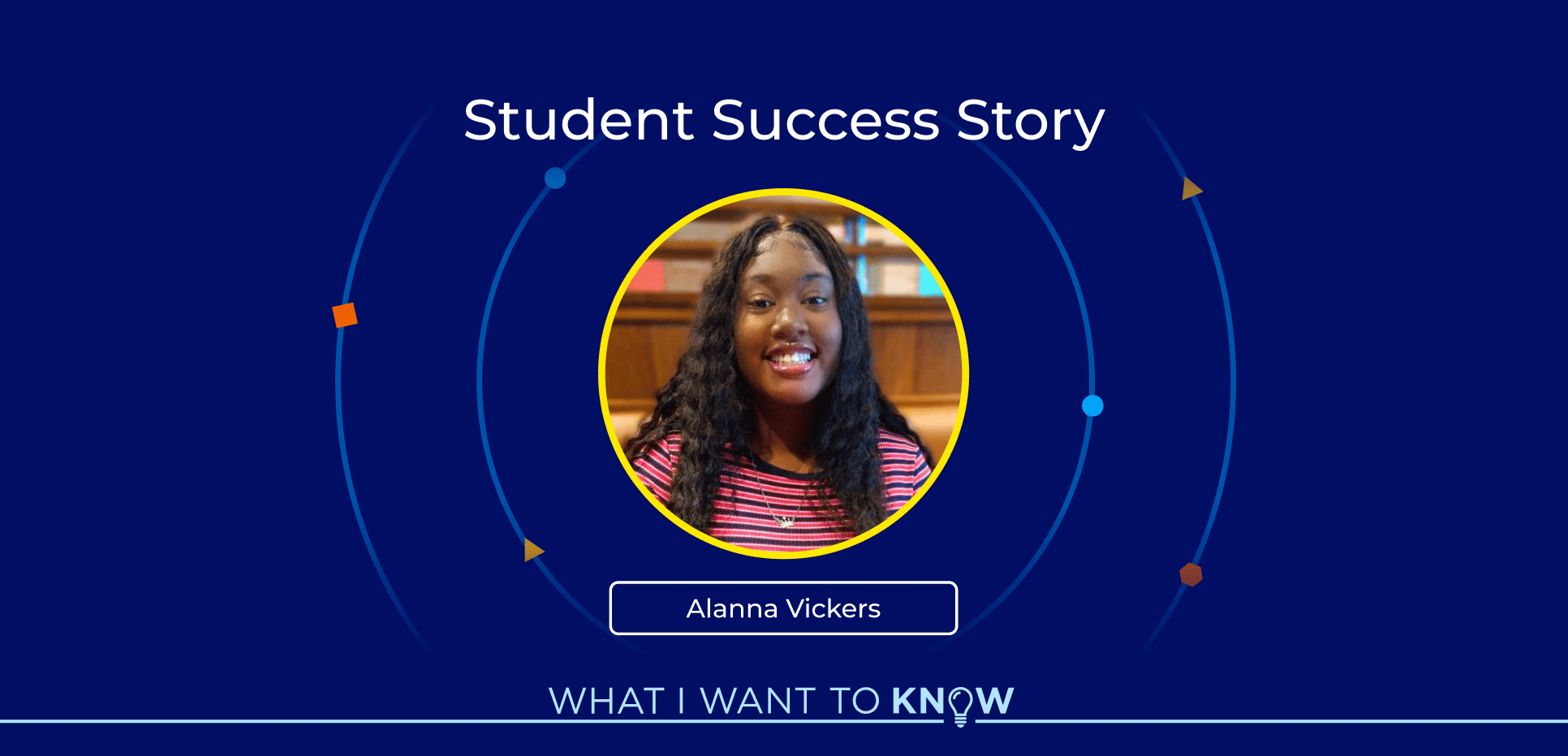Chronic absenteeism has been a growing challenge for our schools, especially following pandemic learning disruptions.
In fact, a report found that chronic absenteeism rates more than doubled from 26% during the 2017–2018 school year to 66% during the 2021–2022 school year.
What causes chronic absenteeism? How is this impacting our students and school communities? And how can schools and parents work together to solve this issue?
In this episode, Hedy Chang joins Kevin to discuss reducing chronic absenteeism in our schools.
Listen to the Full Audio
Listen on: Apple Podcast, Spotify
Transcript
Kevin: In classrooms across the country, teachers are changing the future of student success. That’s why the Stride Professional Development Center is committed to solving teachers’ greatest challenges with live events and a growing library of on-demand professional development content. On March 1st, teachers everywhere are invited to join Stride PD Center’s award-winning conference, Promising Practices 2024. Promising Practices connects teachers to practical strategies and innovative resources they can apply directly in the classroom. Sessions will feature topics such as instructional practices, school culture, student support, project-based learning, and more. Speakers will share resources that can be tailored across subjects and grade levels in any type of school and in every community. In addition to the live events on March 1st, attendees will also receive one-year free access to the Stride PD Center. Learn more and register today at stridepdcenter.com.
Hedy: Chronic absence reflects issues, unstable housing, lack of access to healthcare, poor transportation, lack of nutrition, that not only it’s not just the time missed in the classroom, but these are issues and challenges that when kids and families face them, they do worse even when they’re there.
Kevin: Chronic absenteeism has been a growing challenge for schools, especially following pandemic learning disruptions. In fact, a report found that rates of chronic absenteeism more than doubled from 26% during the 2017-2018 school year to 66% during the 2021-2022 school year. What causes chronic absenteeism? How is this impacting students and school communities? And how can schools and parents work together to solve this issue? This is “What I Want to Know.” And today I’m joined by Hedy Chang to find out.
Hedy Chang is the founder and Executive Director of Attendance Works, a national and state-level initiative aimed at advancing student success by addressing chronic absence. She has spent more than three decades working in the fields of family support, family economic success, education, and child development. She joins us today to discuss how we can reduce chronic absenteeism in our schools. Hedy, welcome to the show.
Hedy: Well, thank you so much for inviting me. I truly appreciate it.
Kevin: First of all, let me ask you, how did you get into this work of family support, trying to help families and students understand economic success, dealing with the absenteeism? I mean, it’s really work that requires a lot of dedicated time, effort, and energy.
Hedy: It does.
Kevin: But I want to go back, I want to peel the onion back and talk a little bit about what led you to this work because I know when you were probably a young student, you probably didn’t think you wanted to get into this work. You probably didn’t know about the work.
Hedy: You know, I answer this in a couple ways. One, growing up as a Chinese American kid in Missouri, in St. Louis, where there weren’t a whole lot of other kids like me, and I faced some tough times growing up because, you know, it’s not always easy being the different one. And really had to figure out how did I create community, find strengths. And it actually gave me an insight into wanting to work on education equity growing up.
Later on, as a mom, when I had my kids, it gave me a different insight into how hard it could be to raise kids, but also how life-changing raising kids were. There are things you will do to make sure your child’s life is better, that you might not do for yourselves. And it really helped me understand that that was a transformative moment for families, for children, for parents.
And then a very long dear friend, colleague of mine, a guy named Ralph Smith, who was then the senior VP of the Annie Casey Foundation, he knew that I was interested in these. We actually used to have long conversations about, was it race, was it economics? What were the equity issues? And Ralph asked me whether or not I would take on taking a look at whether kids who were missing so much school in kindergarten first if that was the reason why they weren’t reading at third grade. And he had known, because he had been the chief operating officer for the Philadelphia schools, from that experience that he thought that was true. But he wanted to see whether that was true nationwide. And that was in 2006.
And that led eventually to a publication called “Present, Engaged and Accounted For,” where I realized . . . So, first, I thought of course, you know, but then I started looking at the data and realized no one actually collected data on all absences. People only looked at truancy unexcused absences. They only looked at average daily attendance.
The Casey Foundation actually had come to this also because, in Maryland, the Superintendent Nancy Grasmick had, for some reason, I think out of common sense, had gotten all the districts in Maryland to start reporting how many kids missed 20 days or more, or showed up to school 5 days or less. And so the Casey Foundation was kind of frustrated because they had something called the Making Connections Initiative that was operating in 22 places across the country. And they said, “We can get this data in Maryland for any of the places that we’re working in, but we can’t get it in these other states.”
And so I started looking at this and figured out a couple of things. One, the only state that had this data was Maryland. No one else did. The second issue was that it was largely being overlooked. And I remember there was one large urban area, that actually was Cleveland, where we had been in contact with a researcher. This was actually through the Urban Institute. We were looking at their data, and I realized at that time that they had 40% of their kindergartners were chronically absent. That was something like, if I remember correctly, 6,000 kids.
And I remember texting my dear colleague Ralph and saying, “This issue you’ve got me looking at isn’t a little issue. It’s a huge issue. And if we believe that every generation should have a chance to succeed regardless of the ZIP Code from which they come or they live, then this is a sign that we are not doing that.”
And I will say one other thing that added to this. I sometimes tell this story. At the time that Ralph asked me whether I would take a look at this issue, my oldest son was in second grade, and there was a little boy who was in the class with him. And this little boy actually was reading okay, was really vibrant. I helped with the afterschool programs in our school, so I knew he was an eager, excited learner. His mom, though, was on welfare. She was struggling to get off. And this little boy, sweet kid in second grade, his mom, who probably never had access to decent healthcare and they lived in the projects, his mom passed away. We used to hold their joint birthday parties together. And this was shortly after that.
And I watched this kid struggle in the welfare system. His auntie was across town. Travel became tough. Even though we all knew this kid, we didn’t have the systems and support to change something. And this was a kid who was every bit as smart as my kid. And so it was my poster child because that was unfair. And we needed to have better systems and support.
So for me, this work comes out of multiple places. And combined, that gives you the passion to say, “You know, you’re not in this for the short term. You’re in this for the long haul.” And I’ve been at this since 2006.
Kevin: Yeah. And that’s a beautiful thing. You obviously were called to do the work. And there are a couple things I want to unpack relating to what you just said. One is, were you able to find a link between those kids who couldn’t read in the third grade and absenteeism?
Hedy: Oh, absolutely. We just didn’t have a whole lot of data on it then, and now we have a ton. So we were able to use something called the Early Childhood Longitudinal Study. They have 20,000 kids across the country, and they actually happened to collect this data. And what we found was the kids who were chronically absent in kindergarten, especially if they were living in poverty, had worse third and fifth-grade outcomes. And English language learners actually struggled by first grade.
But you have to take the data and look outwards. It’s not always just the immediate impact. It’s two or three years down the line where you see that kids really struggle. So absolutely there’s a direct connection. If kids miss a lot of school, then it predicts not reading as proficiently by third grade.
But I think it’s also that chronic absence reflects issues, unstable housing, lack of access to healthcare, poor transportation, lack of nutrition, that not only it’s not just the time missed in the classroom, but these are issues and challenges that when kids and families face them, they do worse even when they’re there. They can also reflect, by the way, things that are in schools, being bullied, being pushed out.
But again, these are issues, it’s like a canary in the coal mine. You know, it’s reflecting these other issues, which if you can address them early, if you can notice them early, then you can do something about them. And what’s really helpful about this data is if you can not just look at what’s happening to an individual kid, but say, “You know what? I see 10 kids or 20% of the kids having this issue,” then you can start to look for systemic challenges that really require programmatic and policy solutions.
Kevin: Yeah. And I’m thinking about that young boy you were talking about. You know, many of us who’ve been involved in the work know similar examples, you know, but for accident of birth or accident of ZIP Code. It really sort of dictates whether or not you’ll have a productive future, a productive life or not.
And I’m also thinking about this idea of wrapping your arms around an entire community of kids and dealing with those issues that extend beyond the classroom. Think about the work Geoffrey Canada did with the Harlem Children’s Zone and how it wasn’t just about the classroom, or it wasn’t just about the school community. It was about that living environment.
But when we talk about absenteeism, chronic absenteeism, and this is one of the reasons why I wanted you on, Hedy, I get the sense that it just doesn’t rise to the level of priority in many school districts. And maybe that’s a cultural thing because school districts are dealing with so many other things that it doesn’t quite rise to the level. And also, I don’t want to use the word “hopelessness,” but there’s this feeling that schools generally feel they can only do so much because of the cause of their absenteeism engulfs all these issues that they don’t have control of. Now maybe that’s an oversimplification, but talk to me about that.
Hedy: Yeah. I actually think you’re spot on, on two different issues. One issue is that people didn’t see it. They didn’t look at the right data. They didn’t notice it. They thought because their average daily attendance was 90%, so they didn’t even see it was an issue. So that’s one challenge. Now people are starting to see the issue.
But even for a long time, we do run into this challenge of people think it’s not something they can do anything about. So I think that’s a hopelessness you talk about. And what I know is that maybe schools alone don’t have the resources to address it. But schools and communities together do make a difference. If you look at New York City and their community schools effort, the thing they addressed first was chronic absence. And that has got, by the way, the other academic outcomes.
But that’s because they had community partners lined up to work with schools. They also took data and shared it. So not only the school staff, but they had things called success mentors. So if I were your mentor, Kevin, I would every day, “Hey, Kevin, how are you doing?” If Kevin, you don’t show up. I’d call your home, check-in. If you showed up every day, “Man, I’m so glad to see you.” That bit of help actually made a significant difference in New York City. But you have to make sure that the mentor has the data to do that, right? And they can’t be spending all their time trying to find the school stuff saying, “Hey, did Kevin show up or not?” That does not work.
And so when they provide those resources, they create connection. They allow for other folks in the community to also be at the school helping with the work. And the interesting thing for the kids in New York City, when they did that success mentor effort, the kids for whom it made the most difference, one of them was homeless kids. And you think about it. How hard is it for a homeless kid to show up on campus? And what you’re trying to do is give . . . relationships are so important because they both motivate kids to show up because I know someone is going to be there that cares about me. It makes me feel welcome at school. And if I have a challenge that I need help with, I know who I can talk to.
Kevin: And, you know, I do know about the New York experience, and my sense is true to what you just said, Hedy, is that school districts are getting better at this in terms of capturing the data. But we had a crazy thing called the pandemic that sort of blew things away even more. So talk about the impact of, you know, the pandemic on this whole issue of chronic absenteeism particularly as it relates to the fact that school districts are starting to collect the right data, work with community-based organizations to address some of these acute intensive needs. And then the pandemic comes, and now the numbers, even in New York, New York has 100,000 missing kids. What happened with the pandemic? And talk about where we are now.
Hedy: Yeah, great question. So before the pandemic, we had about 16% or 8 million kids across the country who were chronically absent. By the ’21, ’22 school year that had shifted to almost 30% of all kids, 14.7 million. And the ’22, ’23 school year data looks like maybe we improved a couple percentage points, but we were still much, much higher.
And it is true that I think that proved overwhelming for many districts, even the ones that had started to have systems. And we only just started to really collect this data the year before the pandemic . . .
Kevin:
Hedy: . . . which, by the way, I’m so glad because I think what it helps give us insights into is that we’re still dealing with the aftermath, and if we don’t deal with this, we’re not going to actually get the recovery we want.
I think the shift it means for practice, though, is that if you think about a tiered system of supports and there’s universal supports, and then there’s using data to identify kids who need early intervention and then more intensive intervention. And districts before the pandemic had been starting to create the partners to do early intervention.
What we actually now need to do is invest in the universal supports because when you have large numbers of kids, you have to figure out how everyone in a school community can pull together to really create what we call the positive conditions for learning. So what do I mean by that? That means when kids walk into school, they feel physically, emotionally healthy and safe, that kids feel a sense of belonging, connection, and support, that kids feel academically engaged, and feel that what they’re learning is relevant to their lives, and that kids are surrounded by adults and other peers who can invest in the relationship. That is so key to that.
That means I think what happened is before the pandemic, there were some kids who didn’t have relationships, and we saw the chronic absence. But during the pandemic, the number of kids, the percentage of kids who didn’t feel connected to school grew by huge numbers when we went into virtual instruction. And what I don’t think we realized is that re-engaging kids was going to require intentionality, using data to figure out who still wasn’t engaged. And so, you know, what we’ve seen is the places that build relationship building into the heart of what they do, into everyone’s jobs, those places seem to be able to be doing better and recovering.
And I will say the one thing we also have to think about is this is something about the data. Before the pandemic, about a quarter of all kids were in a school where 20% or more of their kids were chronically absent. Once you have 20% or more of your kids, 1 out of 5 kids chronically absent, the churn that’s happening is affecting the ability of teachers to teach and kids to learn and to set classroom norms as well as figure out how do you move forward with instruction, right, because kids are constantly in and out. After the pandemic, it shifted from 25% to 65% of all kids in a school with 20% or more.
We are seeing, by the way, much more attention to chronic absence now, and I think it’s because if you are in most schools today, you kind of can’t avoid that this is affecting your ability to serve kids, for teachers to teach, for kids to learn. And it means that we have to really invest in relationship building and creating ways for kids to learn what they might have missed.
One of the things we’re hearing also from the pandemic is kids are anxious about school. And some of that is because during the pandemic, they missed out on some crucial concept that is making it hard for them to move forward now, and they’re anxious about it. So we have to get better about finding out from each kid, what did you learn? Where did you miss out? How do we help you make up for that? Kids are resilient. They can always learn. We sometimes have cookie-cutter systems, though, that don’t support figuring out what kids still need to learn in order to move forward. And I think those challenges with our system really became clear during the pandemic.
Kevin: You know, when you talk about cookie-cutter systems, that’s why I’m glad you talked about that tiered approach, where you have the universal support systems that schools are trying to put in place. But depending on the level of challenges that has led to the chronic absenteeism of an individual child or group of children, you may have to dig down even deeper, make it more personalized, make it more intensive.
But, you know, there’s another aspect to this absenteeism issue. Some of it relates to parents and, you know, their feeling that the school environment doesn’t provide safety for their kids, particularly, you know, after the pandemic when parents got a chance to, you know, peek under the camel’s tent and see what was going on. There’s also, for kids that are slightly older, it’s the relevance of school that sort of, you know, is lingering out there.
And so I want to ask you a question. This is going to sound very, very simplistic. You know, I was speaking to a group of superintendents, and I talked about the Finland experience. A lot of it’s apples and oranges. But as you probably know, in Finland, the one thing they do, they really believe in play. They believe in social time. They believe in wanting school to be an attractive place for kids to want to come to. And, you know, one superintendent told me that one of his sort of approaches in dealing with this absenteeism is just that. He wants to make his school community a fun, safe, engaging place for kids. So he has had to even train his staff to try to get them to be more I guess the word is relatable, to let students know you’re not just going to come down here for the drill and kill experience. You know, not to just to take this test or to sit in a classroom and sit silently like a robot and then, you know, respond to a test to figure out if you were listening.
And, again, it’s oversimplification. But this idea of engagement and making school feel like it’s a warm, inviting place that kids want to go to, not the adults say, “You have to go here,” talk a little bit about that because I’m increasingly believing that particularly post-pandemic, where all these fears were just built in, that that is part of the solution as well.
Hedy: Absolutely. I mean, it’s been part of the solution before and during and now after the pandemic. The pandemic just made some things a little more obvious, I think.
Kevin: And look, I couldn’t agree with you more, Hedy. But one thing and we’ve talked about this on a number of my programs. A lot of what you’re saying calls for a radical reorientation of the structure of our schools. Some are already doing this. But when you’re talking about particularly older kids feeling empowered and having these career pathways being made available to them ,where they can have a voice, when you’re talking about the learning environment not being a stand-and-deliver lecture format, but there’s some engagement, you work in teams, you solve problems, schools understand that, but the change is slow because we’ve been stuck in a structure that has been in existence for many years.
That’s not a statement of criticism. It’s a statement of reality, which I think has contributed to the fact that we sometimes in some places have a hard time getting kids to see the relevance. So talk about what you think schools could be doing to sort of close that gap between the way we’ve always done it, what we know, and then where we’re going and what we know we need to do to help us get there for the benefit of kids.
Hedy: I think about the fact that Bob Balfanz talks about student connectedness as being a key pathway forward. And what do we mean by student connectedness? A kid feels that there’s someone, an adult who cares about him. The kid is connected to peers who care about them. The kid is involved in something pro-social, and the kid feels that school is a welcoming place. I do not think those are hugely difficult demands to ask of any school to create for kids. There’s a whole variety of ways you can do that.
But we also sometimes in schools are not very creative about even using the resources we have at our fingertips, like expanded learning programs to actually create those conditions. You know, you’ll have a student attendance team on a school campus, but they have no connection to the expanded learning folks who live on the campus. You have a student attendance team. The health clinic isn’t talking to anyone when the health clinic actually sometimes has some of the people who actually are talking with and know students. You know, we could actually strive for that and look at the whole variety of resources we have at our fingertips to make that possible.
Kevin: Yeah. Last question, Hedy. I really appreciate you joining the show. As it relates to chronic absenteeism in the future, in your humble opinion, are you optimistic that we’re going to make strides in closing that gap?
Hedy: Absolutely. Partly what makes me optimistic is places like the state of Connecticut, which I have seen them make tremendous strides. You know, their chronic absence went up, but now it’s gone down. It went up from, you know, around 10% to 24%. That was a huge increase from before the pandemic was over. But then last year they brought it down to 20%. It looks like they’re down another couple of percentage points. And then when you look at their data, the lowest income kids, the most challenged, highest needs kids are seeing the greatest gains. Now this is because they have a very intentional strategy. They actually collect data every single month from school districts, and then they make it publicly available so everyone can see.
And that also, because they were doing that and they made sure that their measures for virtual learning were pretty stringent, they realized they had a problem early on, and that allowed them to think about where they needed to add resources. They created something called the Learner Engagement and Attendance Program called LEAP. LEAP involves a multiple home visit approach, where if I know a kid was chronically absent, meet with them in the summer, make sure that they’re connected to resources, meet with them again in the fall, make sure they’re connected to their teacher. Kids who were in LEAP improved their attendance by 15 percentage points on average. They were able to serve 8,000 kids through LEAP.
You know, there are examples of where Commissioner Charlene Russell-Tucker is an amazing colleague, who really thinks holistically about kids and families and communities. And when you see that kind of leadership combined with data, she also has a whole team of folks in her department working across departments to make this happen. They collaborate with Public Health. You can see the numbers coming down.
It will take us a while. Re-engagement is not an overnight occurrence. But when you have that intentionality, you can certainly bring it down over time. It just may take us a few years. We can continue to reduce chronic absence and get back hopefully not only to where we were pre-pandemic, but ultimately to making sure every kid feels connected and supported in school.
Kevin: I love it. I love ending on a high note. We give a gold star to Connecticut. And for all those superintendents out there listening, you should look at Connecticut as an example. We can’t stick our heads in the sand on this one. This is one we need to be very, very intentional and deliberate about.
Hedy Chang, thank you so much. I enjoy what you talked about, and I also enjoy the work you’re doing and keep on doing it. And thanks for joining us on “What I Want to Know.”
Hedy: Thank you so much.
Kevin: Thanks for listening to “What I Want to Know.” Be sure to follow and subscribe to the show on Apple Podcasts, Spotify, or your favorite podcast app so you can explore other episodes and dive into our discussions on the future of education. And write a review of the show. I also encourage you to join the conversation and let me know what you want to know you using #WIWTK on social media. That’s #WIWTK.
For more information on Stride and online education, visit stridelearning.com. I’m your host, Kevin P. Chavous. Thank you for joining “What I Want to Know.”
Meet Hedy
Hedy Chang is the founder and executive director of Attendance Works, a national and state-level initiative to advance student success by addressing chronic absence.
She has spent more than three decades working in the fields of family support, family economic success, education, and child development.






